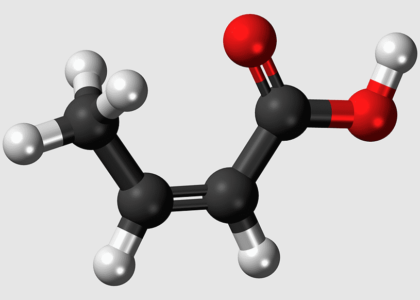As per a Future Market Insights (FMI), the Africa zero liquid discharge system market is projected to total US$ 27.7 Mn in 2021, growing at a positive 5.4% CAGR over the assessment period, from 2021 to 2031. Product innovations in zero liquid discharge systems, along with robust aftersales service network and product customization offered by key market players are anticipated to push sales of zero liquid discharge systems in Africa.
After countering the initial impact of the unprecedented COVID-19 outbreak, the Africa zero liquid discharge system market is anticipated to witness year-over-year growth at 5.0% between 2020 and 2021. FMI projects Germany, France, Spain, and South Africa to emerge as key producers in the Africa zero liquid discharge system market during the forecast period.
Get | Download Sample Copy with Graphs & List of Figures @
https://www.futuremarketinsights.com/reports/sample/rep-gb-13949
2016-2020 Africa Zero Liquid Discharge System Market Outlook Compared to 2021-2031 Forecast
Demand for zero liquid discharge (ZLD) systems in Africa is projected to grow at 5.4% CAGR between 2021 and 2031, in comparison with 2.3% CAGR registered during 2016-2020. Rising demand for new process facilities, along with overhauling of existing effluent treatment systems will continue augmenting market growth in the forthcoming years.
With the persistent water crisis, demand for ZLD systems for new sources of potable water in African countries is on a rise. On industrial front, end users of ZLD systems include food & beverage, textiles, electricity generation, mining, oil & gas exploration, and pharmaceutical industries.
One of the key factors driving the adoption of ZLD over conventional effluent treatment plant (ETP) systems is increased efficiency and a cutting-edge wastewater treatment process that eliminates all liquid discharge from a system. Capital expenditure in Africa, from the regional as well as foreign direct investments, is facilitating growth by creating opportunities for expansion of businesses operating in the market.
However, High Capital Expenditure (CAPEX) and Operating Expenditure (OPEX) are still major restraints for ZLD plants as they usually have higher installation costs as compared to other wastewater treatment processes. Increasing scope of zero effluent discharge and provision of reuse in process stages is driving sales of hybrid zero liquid systems over conventional effluent management systems. Hybrid zero liquid discharge systems offer high efficiency and reduce energy consumption, while offering long term economic benefits.
For More Information or Query or Customization Before Buying, Visit @
https://www.futuremarketinsights.com/customization-available/rep-gb-13949
Besides this, expansion of chemicals, petrochemicals, mining & metallurgy, and textile industries will continue spurring demand for zero liquid discharge systems in the forthcoming years.
“New system installations and overhauling of traditional effluent treatment plants will positively shape the demand outlook for zero liquid discharge systems over the forecast period. Along with this, increasing investments in the energy, mining and pharmaceutical industries will create lucrative prospects for market players in forthcoming years,” says the FMI analyst.
Key Takeaways of Zero Liquid Discharge System Market Study
- Based on system type, conventional ZLD segment is estimated to account for over 60% of the market share in 2021.
- Applications of ZLD systems in mining & metallurgy are anticipated to gain traction. The segment is projected to grow high CAGR of over 5.5% in 2021.
- Northern Africa and Southern Africa have been estimated to be the leading regional markets in terms of revenue generation, valued at US$ 10.9 Mn in 2021.
- Namibia is anticipated to emerge as an attractive market, accounting for 27.5% of the African zero liquid discharge system market share.
Competitive Landscape
As per FMI’s analysis, the zero liquid discharge system market in Africa is highly consolidated, with leading players accounting for nearly 3/5th of the market share. Some of the key players in the market are are Veolia, SUEZ, GEA Group, ANDRITZ AG, Thermax Global Limited, IDE Technologies, Alfa Laval AB, Multotec Group, Condorchem Envitech, Cannon S.p.A. and Ion Exchange India Limited.
Top 5 players operating in the Africa zero liquid discharge system market include Veolia, SUEZ, GEA Group, Alfa Laval AB, and Multotec Group.
Ask Us Your Questions About This Report @
https://www.futuremarketinsights.com/ask-question/rep-gb-13949
About Us
Future Market Insights (ESOMAR certified market research organization and a member of Greater New York Chamber of Commerce) provides in-depth insights into governing factors elevating the demand in the market. It discloses opportunities that will favor the market growth in various segments on the basis of Source, Application, Sales Channel and End Use over the next 10-years.
Contact Us:
Future Market Insights,
Unit No: 1602-006,
Jumeirah Bay 2,
Plot No: JLT-PH2-X2A,
Jumeirah Lakes Towers,
Dubai,
United Arab Emirates
For Sales Enquiries: sales@futuremarketinsights.com
Website: https://www.futuremarketinsights.com


